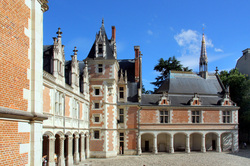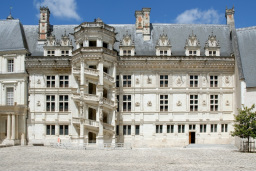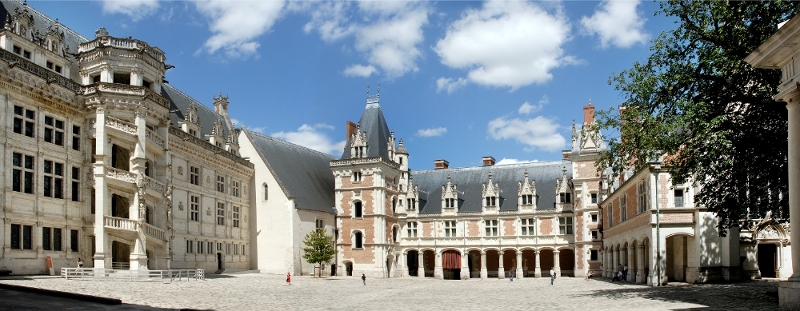Château de Blois - Louis XII

Blois, Louis XII wing
The Blois castle embodies most of the historical and architectural development of the castles in the Loire valley. From the year 1000, when the first fortifications were built on the hills of Blois, to the end of the Hundred Years' War, the castle foundations were gradually developed by the Dukes of Orléans. Shortly after Louis XII became King of France in 1498, he began the reconstruction of the castle. He was born there and this had been his favorite residence since childhood. By the year 1500, the castle had become what we can now see as the Louis XII wing.
Chateau de Blois - Francis I

Blois, Francis I wing
In 1515, Francis I inherited the throne from Louis XII. Louis XII's daughter, Claude, had married Francis I six months before the death of Louis XII. She was very attached to Blois and Francis I developed Blois further by adding a wing styled in his own Renaissance taste, as opposed to Louis XII's Gothic style. Side by side, they thus reflected the evolution in architectural tastes among the royals. Francis I started building the castle of Chambord in 1519, and Queen Claude died in 1524. These events indicate why Francis I did not further develop any building plans for Blois. In addition, he established himself at the castle of Fontainebleau closer to Paris and thereby further left Blois behind.
Chateau de Blois - Gaston d'Orléans

Blois, Gaston d'Orleans wing
Gaston d'Orléans was the brother of Louis XIII. He was more or less constantly in rebellion, open or otherwise, with the king and the Cardinal Richelieu, the king's closest advisor. Gaston was given Blois as apanage in 1626 and began to reside there. The king and Richelieu set Gaston's mind on tearing down and rebuilding the castle to occupy his mind on less political matters. He built the third major wing of the castle complex in the classical style of his epoch, but never established himself there. When he came to the castle to live there permanently around 1652-53, he established himself in the Francis I wing. Gaston's wing remained a hollow shell until the 19th century, when it became military barracks.
If you wish to read more about this, you can go here.
If you wish to read more about this, you can go here.
